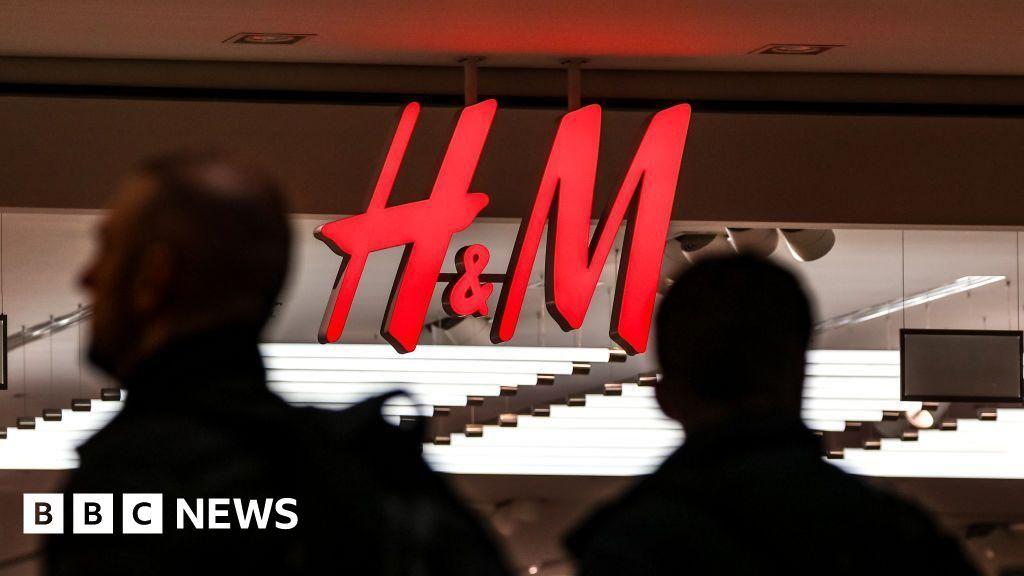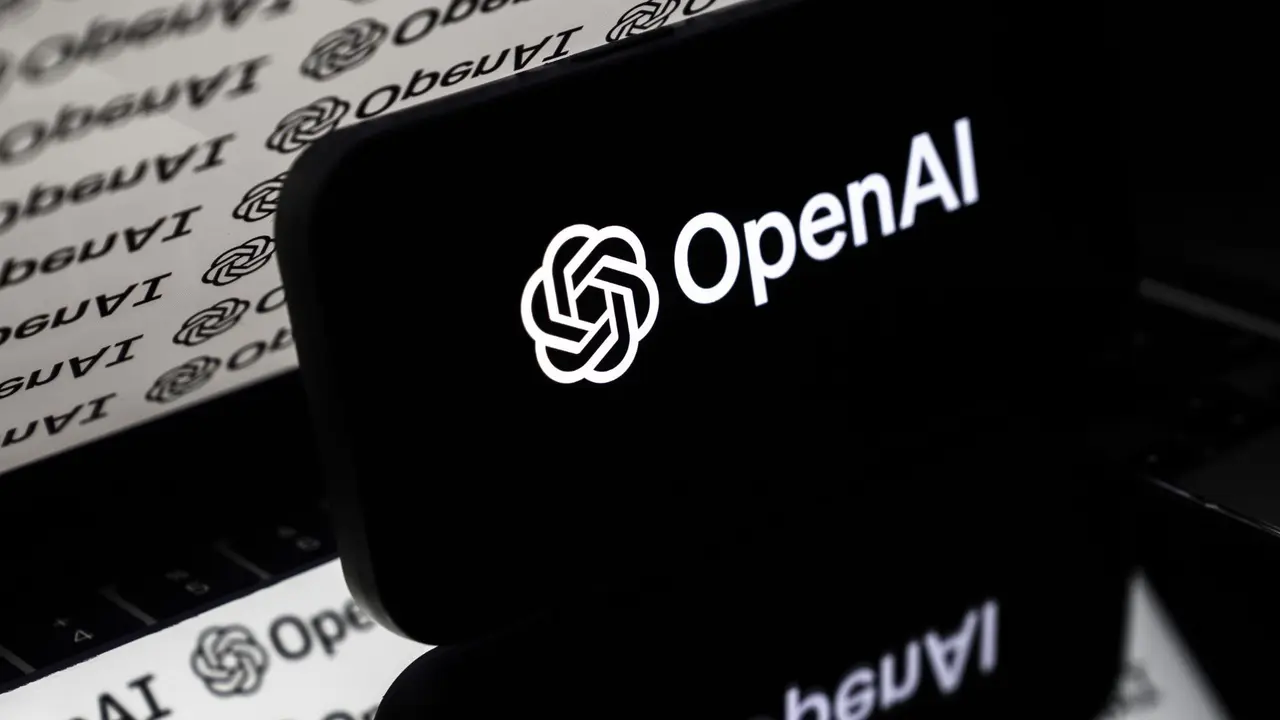Digital Clones and AI-Generated Models Revolutionize Fashion Advertising
2 Sources
2 Sources
[1]
Digital clones of real models are revolutionizing fashion advertising
Driven by advances in artificial intelligence (AI) and metaverse technologies, digital clones are transforming fast-fashion marketing. Always available, ageless and adaptable to any setting, these virtual figures enable brands to create immersive, cost-effective campaigns that resonate with today's digital-first consumers. Read more: Fake models for fast fashion? What AI clones mean for our jobs -- and our identities Virtual influencers -- digitally created personas used to provide entertainment, generate content and endorse brands -- are becoming increasingly influential, especially among Gen Z and digital-first audiences. These virtual figures vary in form: some, like Lil Miquela and Shudu, are entirely computer-generated, while others, such as Hatsune Miku, incorporate human elements like voice or motion. Hybrid influencers blend real and virtual components, allowing for brand-specific customization. These virtual influencers boost brand visibility, drive engagement and influence market performance. Real persons, virtual personas The estimate for global influencer market size for 2024 was valued at over US$24 billion and is projected to grow to over US$32 billion in 2025. The rise of virtual influencers is particularly prominent in Asia. This trend is also reshaping the US$2.5 trillion modelling industry, according to The Business of Fashion. AI-generated avatars and digital clones enable brands to cut production costs and accelerate campaign development. As a result, companies such as Levi Strauss & Co. are partnering with AI modelling firms to integrate these virtual personas into their marketing strategies. Digital twins Digital twins -- virtual replicas of real people -- are gaining traction in marketing to enhance personalization, streamline content creation and deepen customer engagement. In the fashion world, they provide a means to maintain a sense of human connection while using AI for precision and volume purposes. Fast-fashion retailer H&M recently introduced AI-generated digital twins of real-life models for advertising and social media content. Positioned as a creative and operational aid rather than a replacement for human talent, the initiative has ignited industry-wide debate. Read more: AI clones made from user data pose uncanny risks While the brand highlights the advantages -- lower production costs and faster catalogue development -- some critics have raised ethical concerns regarding representation and transparency. These digital twins fall into the category of "front-of-camera" tools: static avatars used in visual content without independent personas or social media presence. Unlike virtual influencers, they do not interact with audiences or build followings. Instead, they function strictly as visual stand-ins for traditional models, who are compensated for the use of their likenesses, similar to conventional campaigns. As these avatars do not speak, endorse or engage directly with consumers, they remain subject to traditional advertising regulations -- not influencer marketing laws. Digital models are used for operational efficiency: testing and refining creative strategies before rollout, reducing costs and potentially offering immersive digital experiences to enhance customer connection and brand loyalty. Authenticity and other challenges In July 2024, fast-fashion retailer Mango launched its first advertising campaign featuring AI-generated avatars to promote a limited-edition collection for teenaged girls. These AI-generated influencers and digital twins introduce numerous ethical and legal challenges. These innovations raise difficult questions about the displacement of human talent -- including models, make-up artists, hairstylists and photographers -- and broader implications for creative industries. Key concerns centre on consent and compensation. The unauthorized use of an individual's likeness, even in digital form, poses a risk of exploitation and underscores the importance of clear standards and protections. The legal landscape regarding image rights and intellectual property is still evolving, which makes compliance both essential and complex. As the lines between reality and digital fabrication blur, brands risk eroding consumer trust. The authenticity that audiences value can be undermined if AI-generated content seems deceptive or inauthentic. Companies must tread carefully, balancing innovation with transparency. Diversity is another critical issue. While AI offers customization, it can also perpetuate biases or create an illusion of inclusivity without genuine representation. As the use of AI proliferates, ensuring that digital models support, rather than hinder, meaningful advancement in representation will be essential. Ultimately, brands must implement ethical frameworks to ensure that AI enhances creativity while maintaining integrity, inclusivity and legal accountability. Strategic considerations Digital clones provide fast-fashion brands with a powerful tool to create personalized shopping experiences and enable greater representation of diverse body types and style preferences. This degree of customization can significantly enhance customer satisfaction and brand loyalty. To ensure ethical integration, transparency is crucial. Brands must clearly disclose when digital models appear in campaigns. These digital representations should encompass a wide variety of demographics to genuinely promote inclusivity and engage with a broader audience. Establishing ethical and legal safeguards is equally important. Creating digital clones requires explicit consent and careful attention to intellectual property rights. Without clear guidelines and permissions, brands risk violating privacy, misusing likenesses and facing legal repercussions.
[2]
Digital clones of real models are revolutionizing fashion advertising
Driven by advances in artificial intelligence (AI) and metaverse technologies, digital clones are transforming fast-fashion marketing. Always available, ageless and adaptable to any setting, these virtual figures enable brands to create immersive, cost-effective campaigns that resonate with today's digital-first consumers. Virtual influencers -- digitally created personas used to provide entertainment, generate content and endorse brands -- are becoming increasingly influential, especially among Gen Z and digital-first audiences. These virtual figures vary in form: some, like Lil Miquela and Shudu, are entirely computer-generated, while others, such as Hatsune Miku, incorporate human elements like voice or motion. Hybrid influencers blend real and virtual components, allowing for brand-specific customization. These virtual influencers boost brand visibility, drive engagement and influence market performance. Real persons, virtual personas The estimate for global influencer market size for 2024 was valued at over US$24 billion and is projected to grow to over US$32 billion in 2025. The rise of virtual influencers is particularly prominent in Asia. This trend is also reshaping the US$2.5 trillion modeling industry, according to The Business of Fashion. AI-generated avatars and digital clones enable brands to cut production costs and accelerate campaign development. As a result, companies such as Levi Strauss & Co. are partnering with AI modeling firms to integrate these virtual personas into their marketing strategies. Digital twins Digital twins -- virtual replicas of real people -- are gaining traction in marketing to enhance personalization, streamline content creation and deepen customer engagement. In the fashion world, they provide a means to maintain a sense of human connection while using AI for precision and volume purposes. Fast-fashion retailer H&M recently introduced AI-generated digital twins of real-life models for advertising and social media content. Positioned as a creative and operational aid rather than a replacement for human talent, the initiative has ignited industry-wide debate. While the brand highlights the advantages -- lower production costs and faster catalog development -- some critics have raised ethical concerns regarding representation and transparency. These digital twins fall into the category of "front-of-camera" tools: static avatars used in visual content without independent personas or social media presence. Unlike virtual influencers, they do not interact with audiences or build followings. Instead, they function strictly as visual stand-ins for traditional models, who are compensated for the use of their likenesses, similar to conventional campaigns. As these avatars do not speak, endorse or engage directly with consumers, they remain subject to traditional advertising regulations -- not influencer marketing laws. Digital models are used for operational efficiency: testing and refining creative strategies before rollout, reducing costs and potentially offering immersive digital experiences to enhance customer connection and brand loyalty. Authenticity and other challenges In July 2024, fast-fashion retailer Mango launched its first advertising campaign featuring AI-generated avatars to promote a limited-edition collection for teenaged girls. These AI-generated influencers and digital twins introduce numerous ethical and legal challenges. These innovations raise difficult questions about the displacement of human talent -- including models, make-up artists, hairstylists and photographers -- and broader implications for creative industries. Key concerns center on consent and compensation. The unauthorized use of an individual's likeness, even in digital form, poses a risk of exploitation and underscores the importance of clear standards and protections. The legal landscape regarding image rights and intellectual property is still evolving, which makes compliance both essential and complex. As the lines between reality and digital fabrication blur, brands risk eroding consumer trust. The authenticity that audiences value can be undermined if AI-generated content seems deceptive or inauthentic. Companies must tread carefully, balancing innovation with transparency. Diversity is another critical issue. While AI offers customization, it can also perpetuate biases or create an illusion of inclusivity without genuine representation. As the use of AI proliferates, ensuring that digital models support, rather than hinder, meaningful advancement in representation will be essential. Ultimately, brands must implement ethical frameworks to ensure that AI enhances creativity while maintaining integrity, inclusivity and legal accountability. Strategic considerations Digital clones provide fast-fashion brands with a powerful tool to create personalized shopping experiences and enable greater representation of diverse body types and style preferences. This degree of customization can significantly enhance customer satisfaction and brand loyalty. To ensure ethical integration, transparency is crucial. Brands must clearly disclose when digital models appear in campaigns. These digital representations should encompass a wide variety of demographics to genuinely promote inclusivity and engage with a broader audience. Establishing ethical and legal safeguards is equally important. Creating digital clones requires explicit consent and careful attention to intellectual property rights. Without clear guidelines and permissions, brands risk violating privacy, misusing likenesses and facing legal repercussions.
Share
Share
Copy Link
AI-powered digital clones and virtual models are transforming the fashion industry, offering cost-effective and versatile marketing solutions while raising ethical concerns about authenticity and human displacement.

The Rise of Digital Clones in Fashion Advertising
The fashion industry is witnessing a revolutionary transformation driven by artificial intelligence (AI) and metaverse technologies. Digital clones and AI-generated models are reshaping the landscape of fashion advertising, offering brands new ways to create immersive and cost-effective campaigns
1
.Virtual Influencers and Digital Twins
Virtual influencers, entirely computer-generated personas like Lil Miquela and Shudu, are gaining significant traction, especially among Gen Z audiences. These digital figures, along with hybrid influencers that blend real and virtual components, are boosting brand visibility and driving market performance
1
.The global influencer market, valued at over US$24 billion in 2024, is projected to grow to over US$32 billion in 2025. This trend is particularly prominent in Asia and is reshaping the US$2.5 trillion modeling industry
2
.AI-Generated Avatars in Fast Fashion
Fast-fashion retailers are at the forefront of this digital revolution. H&M recently introduced AI-generated digital twins of real-life models for advertising and social media content. These digital twins, categorized as "front-of-camera" tools, function as visual stand-ins for traditional models without independent personas or social media presence
1
.In July 2024, Mango launched its first advertising campaign featuring AI-generated avatars to promote a limited-edition collection for teenage girls
2
.Benefits and Applications
Digital clones offer several advantages to fashion brands:
- Cost-effectiveness: Reduced production costs and faster catalog development
- Versatility: Always available, ageless, and adaptable to any setting
- Operational efficiency: Testing and refining creative strategies before rollout
- Personalization: Enhanced customer engagement through immersive digital experiences
Related Stories
Ethical and Legal Challenges
The rise of AI-generated models introduces numerous ethical and legal challenges:
- Displacement of human talent: Concerns about the impact on models, makeup artists, hairstylists, and photographers
- Consent and compensation: Risk of exploitation and unauthorized use of individual likenesses
- Consumer trust: Potential erosion of authenticity if AI-generated content seems deceptive
- Diversity and representation: Ensuring AI supports genuine inclusivity rather than creating an illusion of diversity
Strategic Considerations for Brands
To navigate this new landscape, fashion brands must:
- Implement ethical frameworks to maintain integrity and legal accountability
- Ensure transparency by clearly disclosing the use of digital models in campaigns
- Establish clear guidelines for consent and intellectual property rights
- Use digital clones to create personalized shopping experiences and represent diverse body types
- Balance innovation with authenticity to maintain consumer trust
As the fashion industry continues to embrace AI-generated models and digital clones, it must carefully navigate the ethical, legal, and strategic challenges to harness the full potential of these technologies while maintaining integrity and consumer trust.
References
Summarized by
Navi
[1]
Related Stories
H&M Introduces AI-Generated Digital Twins of Models for Marketing
28 Mar 2025•Technology

AI-Generated Digital Twins in Fashion: Revolutionizing Industry, Raising Ethical Concerns
25 Apr 2025•Technology

Vogue's AI-Generated Model Ad Sparks Controversy in Fashion Industry
29 Jul 2025•Entertainment and Society

Recent Highlights
1
AI Chatbots Sway Voters More Effectively Than Traditional Political Ads, New Studies Reveal
Science and Research

2
Trump signs executive order to override state AI laws despite bipartisan pushback
Policy and Regulation

3
OpenAI warns upcoming AI models will likely pose high cybersecurity risk with zero-day exploits
Technology





